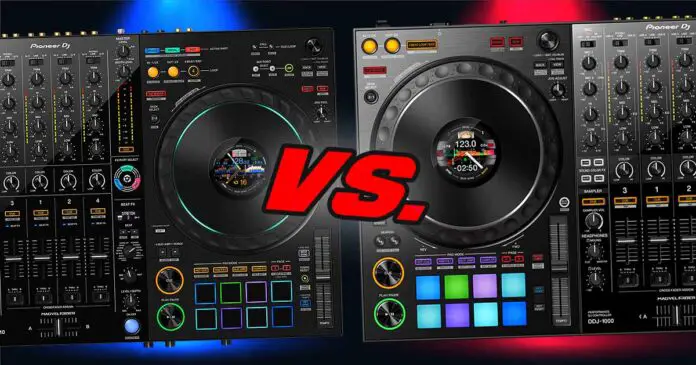Pioneer DDJ-FLX10 is officially meant to be the direct replacement for the DDJ-1000 series, and today I had the pleasure to compare these two devices in a head to head battle from which only one winner can emerge. Unless? Well, let’s just say that there are many similarities between these two devices, and in many cases this makes the choice between them even harder than it initially seems. Want to know more? Read on!
- Short Summary For The Impatient
- What’s Actually Changed, And What Stayed The Same
- Stem Separation Controls on the DDJ-FLX10
- Jog Wheel Updates
- DDJ-FLX10’s DMX Featrues
- DJ Software Support
- Pros & Cons
- So, What’s The Conclusion?
Check out also: Pioneer DDJ-FLX10 vs. OPUS QUAD (Which One Is Better?)
This web portal is reader-supported, and is a part of the Amazon Services LLC Associates Program and the eBay Partner Network. When you buy using links on our site, we may earn an affiliate commission!
Short Summary For The Impatient
| Controller | Features | Price |
|---|---|---|
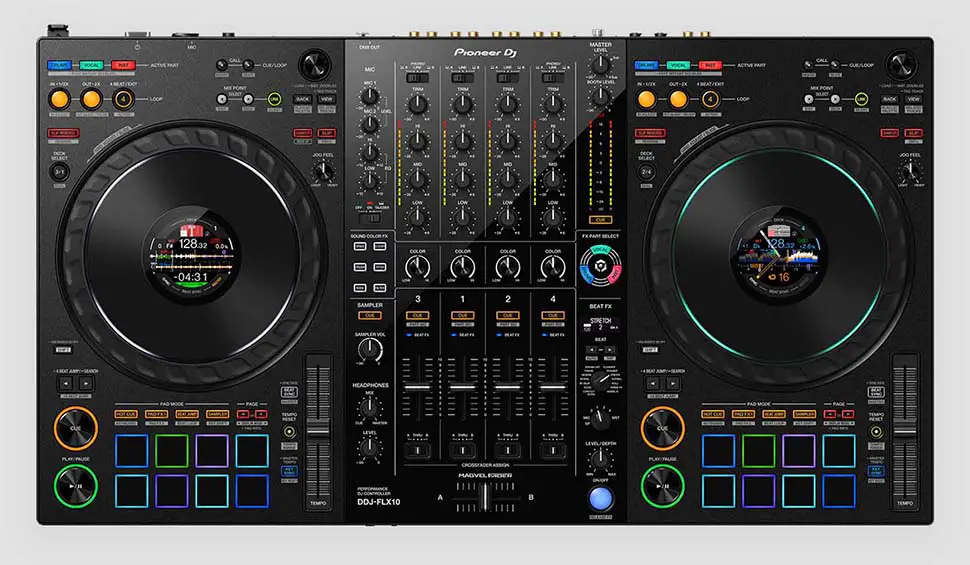 | Pioneer DDJ-FLX10: – AI stem separation features with dedicated controls. – New, refreshed layout. – Compatible with both Rekordbox and Serato DJ software. | Check price on Amazon Check price on Ebay Check price on Guitar Center |
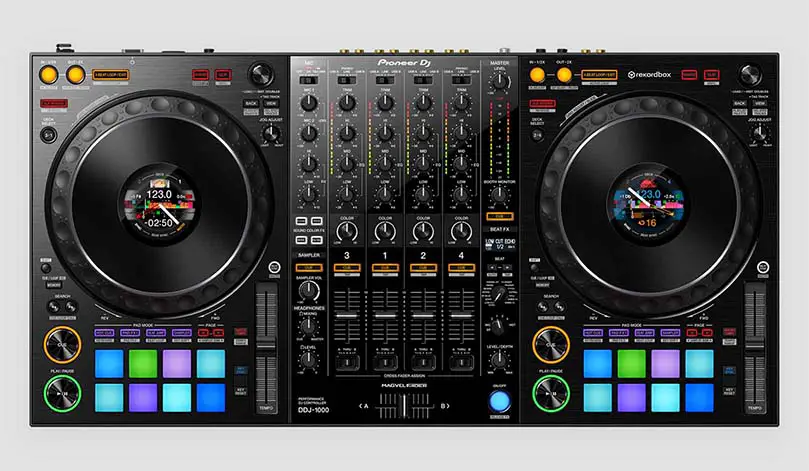 | Pioneer DDJ-1000: – Largely the same feature set without AI stem features. – Has a second Serato compatible version. – Can be found for a lower price. | Check price on Amazon Check price on Ebay |
What’s Actually Changed, And What Stayed The Same
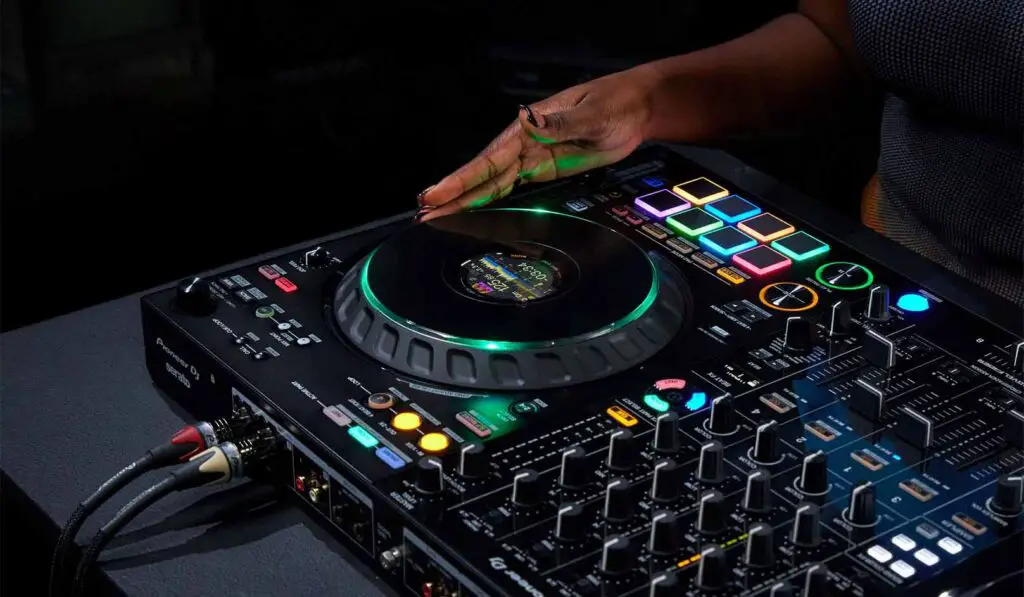
If I was to quickly summarize all the things that changed in the new DDJ-FLX10 they would be as follows: access to the stem separation features with dedicated controls, 2 more Sound Color FX on board, built-in DMX controller, support for both Serato DJ and Rekordbox DJ software and minor design/size changes. That’s about it!
When you compare both of these DJ controllers, you will quickly find out that in terms of the very basic controls, input/output pairs and the general feature set there are no large differences here, at least after the very first look.
Both devices are professional 4-channel DJ controllers with full-size mechanical jog wheels and all the features a full industry standard club setup should have, and both of them feel very much similar to use.
The size of the controllers differs by just a bit. The Pioneer DDJ-FLX10, is a little bit larger when it comes to depth and width, however this is a small difference which can at worst make your smaller case unusable if you decide to upgrade.
The dimensions of the FLX10 are around 26.6 x 13.6 x 2.7” (676 x 345.7 x 68.7 mm), while the DDJ-1000 is about 27.9 14.2 x 2.9” (708 x 361 x 73mm). Not a large difference at all.
Both devices feature similar Magvel crossfaders, and the only thing different here is the design of the printed-on underlaying fader/crossfader level indicators.
Performance pads on both devices feel exactly the same, although the Pioneer DDJ-1000 makes use of the full-surface RGB LED lighting, while the DDJ-FLX10 goes with the edge lighting approach which I personally don’t like that much.
The Pioneer DDJ-1000 utilizes the USB-B connection standard for the controller-laptop connection, while the DDJ-FLX10 uses newer USB-C connectors.
When it comes to the audio FX, the Pioneer DDJ-FLX10 has a little bit more to offer with 2 more Sound Color FX on board. The extra effects you get with the FLX10 are the Space and Crush FX. That’s pretty much it when it comes to the FX differences, other than the Pitch effect is replaced by Stretch FX on the FLX10.
The jog wheel changes we’ll cover in a short while, as there are a few notable differences between the two.
Stem Separation Controls on the DDJ-FLX10
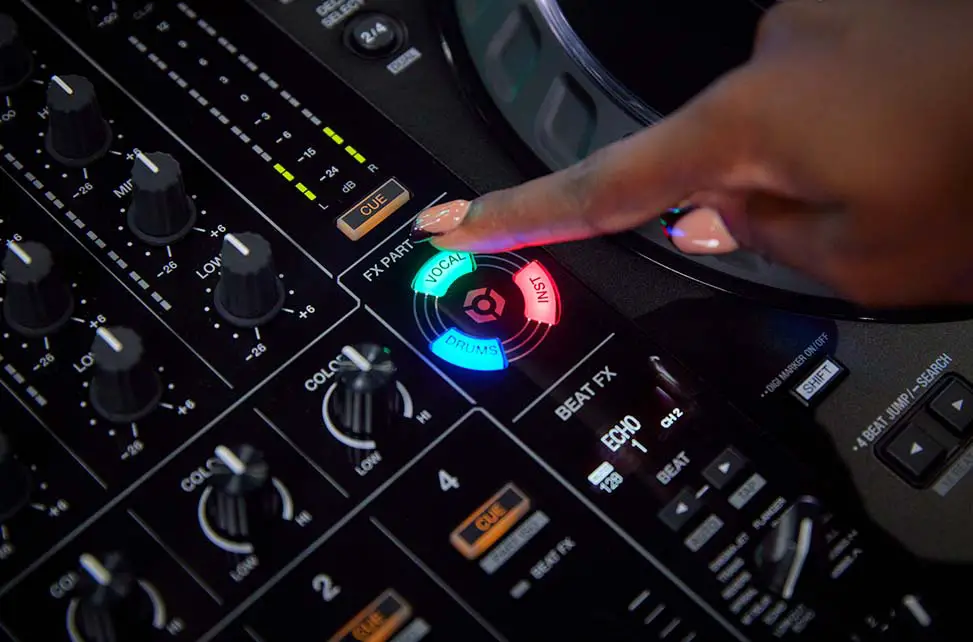
The stem separation feature dedicated controls are the thing that makes the Pioneer DDJ-FLX10 stand out, and also, one of quite a few things that actually makes considering an upgrade from the Pioneer DDJ-1000 a valid idea.
You get dedicated buttons for turning on and off drums, vocals and the instrumental of your active track, making instant doubles with selected stems, and moreover, you can use your audio FX on just a selected part of your track which is pretty cool.
This way on the Pioneer DDJ-FLX10 you can for instance, apply reverb just to the track’s vocals, while making an instant double of the drum section for some creative beat juggling. There’s a lot of possibilities when you have all the needed controls right under your fingertips.
When it comes to the stem separation quality, well, it is reasonably good, but it’s safe to say that it is not perfect. This however, can and will change with Serato/Rekordbox software updates, and you can expect the stem separation technology to advance as the time goes by.
And yes, the stem separation quality differs between Serato and Rekordbox, as this feature relies 100% on the software, and besides the dedicated buttons has nothing to do with the controller itself.
Once again, the dedicated stem separation controls are a thing exclusive to the Pioneer DDJ-FLX10, although there are also some tricks to make use of this feature on older Pioneer DJ controllers such as the DDJ-1000 we’re talking about in this article, or the DDJ-800.
Jog Wheel Updates
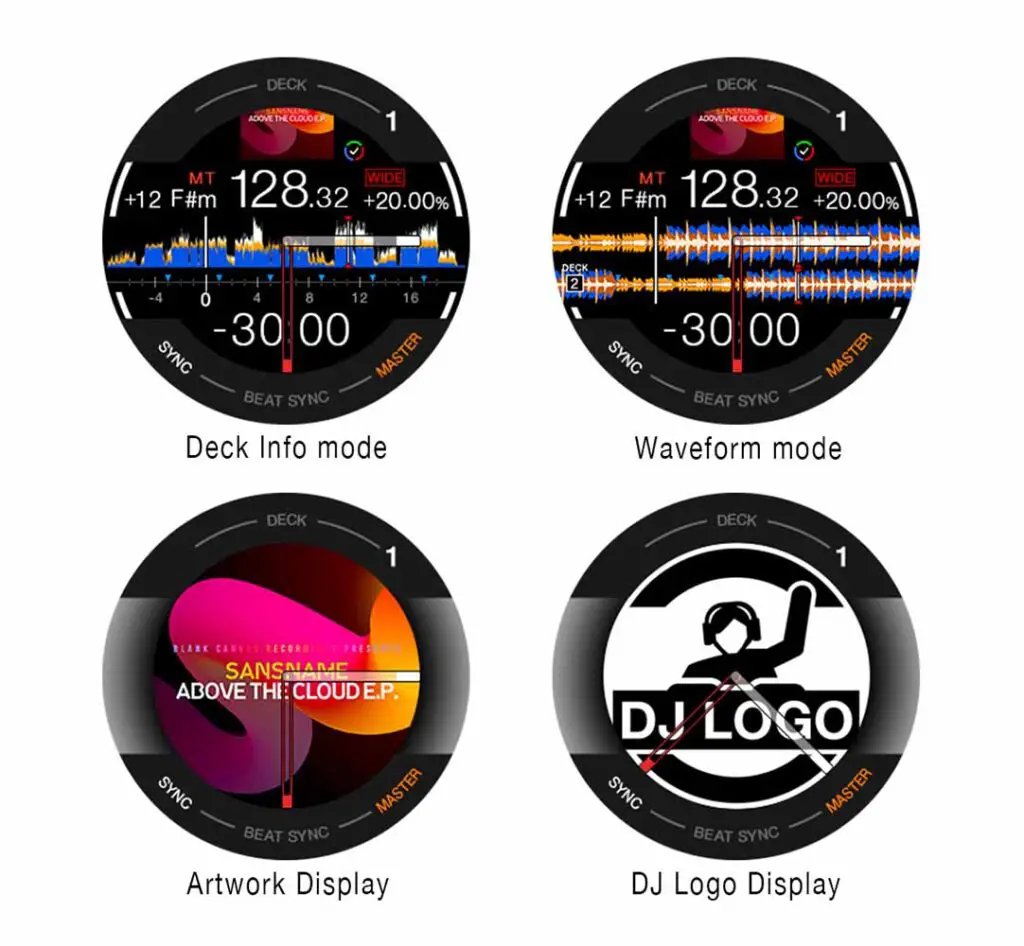
First things first, the jog wheels on the Pioneer DDJ-1000 and the DDJ-FLX10 are the exact same size, that is the standard size of the full-scale CDJ-2000/3000 mechanical jog wheels, which is pretty much a standard these days.
You can find jog wheel displays on both controllers, however the displays on the Pioneer DDJ-FLX10 are of slightly higher quality and can display more information than the DDJ-1000 (for instance they are capable of displaying the full 3 color track waveforms and, among other things, the performance pad mode list, unlike the DDJ-1000).
The 206 mm (~8.11 in) jog wheels on both devices are mechanical, like the ones present on the CDJ-2000NXS player series, but they do feature different edge finish designs, with the DDJ-1000 having the classic CDJ finish, while the FLX10 goes with the more recent FLX-series signature finish. This is purely a cosmetic difference.
DDJ-FLX10’s DMX Featrues

The Pioneer DDJ-FLX10 has an important feature that the DDJ-1000 doesn’t have – the DMX output for controlling DMX-compatible lights using your controller.
This enables you to use the controller with DMX lighting, without needing to use an external DMX box. Pretty cool!
As I’m not a frequent DMX user, I will not elaborate further on this. You can find many tutorials online if you’d like to incorporate light effects into your DJ sets with the aid of the DMX standard.
DJ Software Support
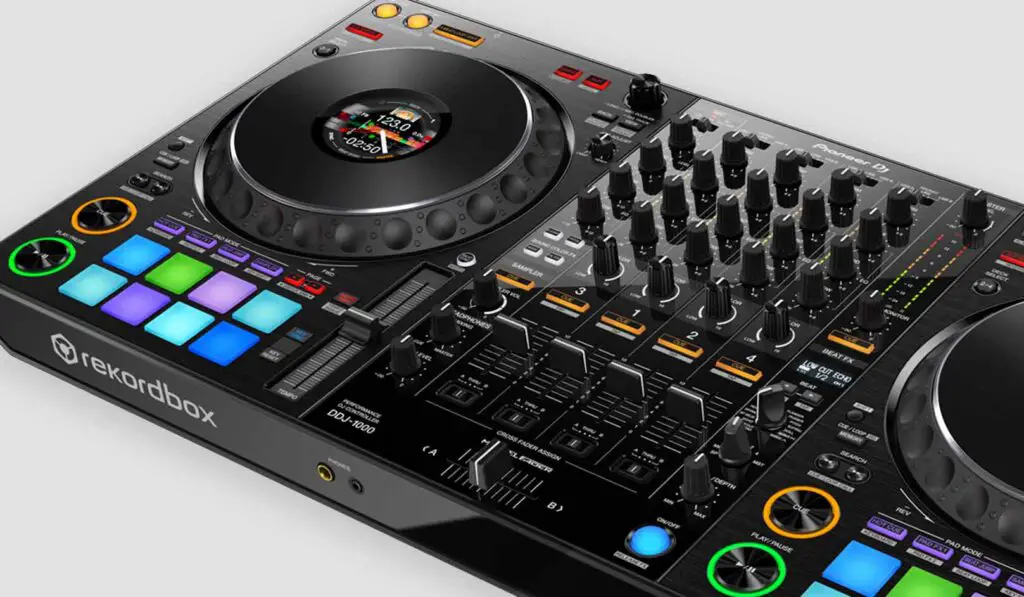
While you can freely use your Pioneer DDJ-FLX10 with both Serato DJ Pro and Rekordbox DJ software, the Pioneer DDJ-1000 is a Rekordbox exclusive DJ controller.
The Pioneer DDJ-1000 has its older brother, the Pioneer DDJ-1000SRT, which is a Serato DJ exclusive controller. Check out our comparison of these two here! This means you have to choose between Serato and Rekordbox before making a purchase, if you decide to go with the DDJ-1000 as your main DJ controller.
Read this to learn more! – Pioneer DDJ-1000 vs. DDJ-1000SRT (What Are The Differences?)
Of course, both the Pioneer DDJ-1000 and the DDJ-FLX10 are also compatible with DJ software such as Virtual DJ and Mixxx, which allow you to make use of custom MIDI mappings.
Pros & Cons
Pioneer DDJ-FLX10
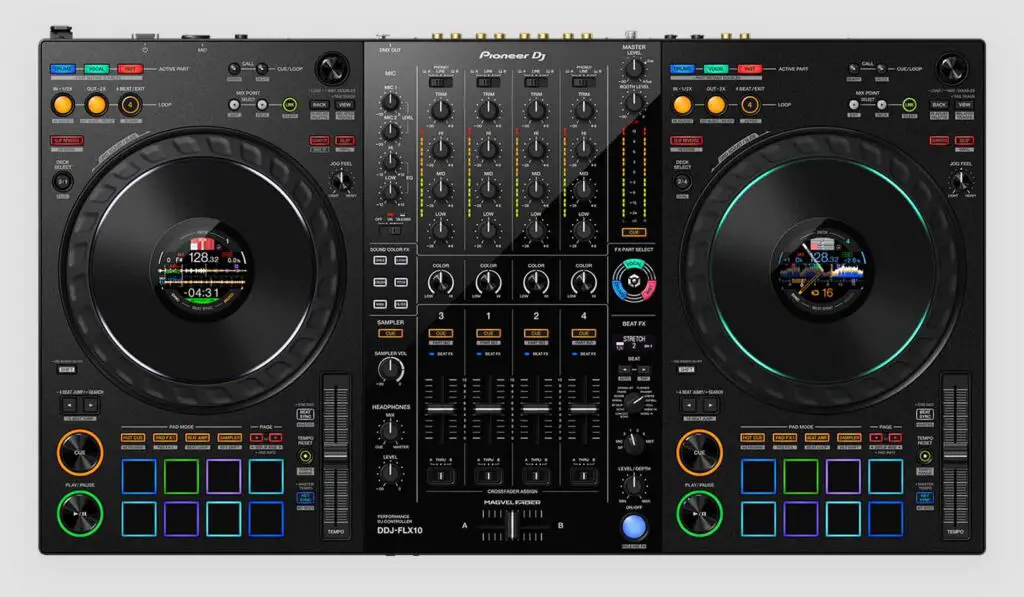
Pros:
- Dedicated stem separation controls on the device.
- Two more Sound Color FX (a set of 6 in total).
- Updated jog wheel displays, higher image quality, more information displayed.
- Updated design matching the new sleek FLX series aesthetic.
Cons:
- A tad bit larger than the DDJ-1000 series (mind your cases!).
- Not many big changes when compared to the DDJ-1000.
Pioneer DDJ-1000

Pros:
- Still a top-notch professional DJ controller with more than enough advanced features to rock any dancefloor!
- Full-surface performance pad backlight (I like that more than the edge-lighting approach).
- A little bit smaller than the DDJ-FLX10.
- One of the most popular flagship Pioneer DJ controllers as of now.
Cons:
- Made either for Rekordbox DJ (DDJ-1000), or Serato DJ Pro (DDJ-1000SRT) – you have to decide on the software before the purchase.
- Does not have dedicated stem separation controls on board.
- Small and very basic set of Sound Color FX.
So, What’s The Conclusion?
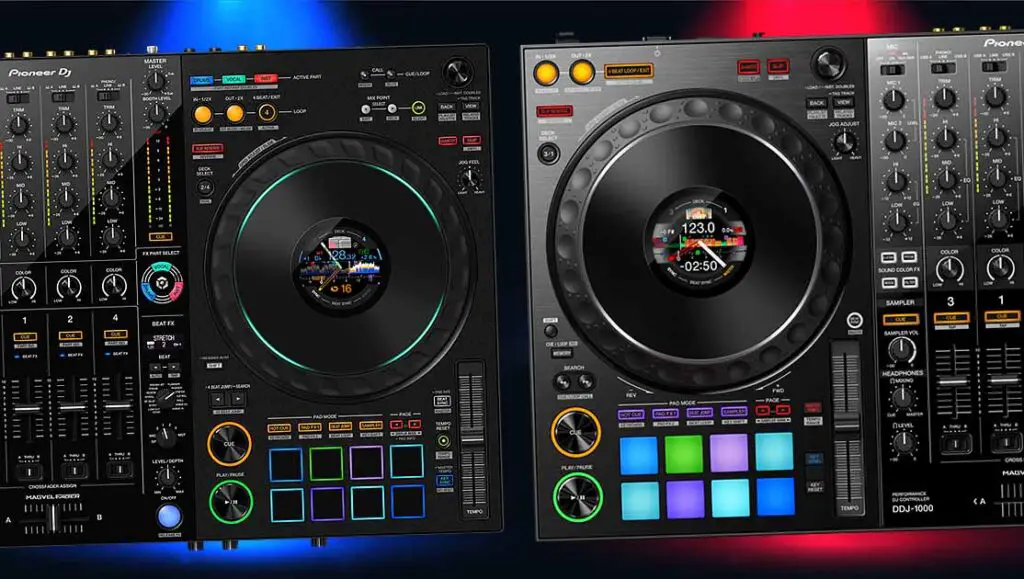
If you’re still unsure whether you should go for the now older Pioneer DDJ-1000, or should you head straight for the DDJ-FLX10, think about that in this way.
If you already own the DDJ-1000 or DDJ-1000SRT, you will get access to a few new features such as the stem separation feature controls, 2 additional Sound Color FX, DMX controller and a few design/layout updates. Oh, and the possibility to use your controller with both Serato and Rekordbox. Beyond that you don’t get much more, except for the obvious and quite important thing: prolonged support for your main DJ device because of the later hardware release date.
If you don’t own a “professional” DJ controller yet, both the Pioneer DDJ-1000 and the Pioneer DDJ-FLX10 will present a similar workflow and mixing experience for you, with the FLX10 being more recent, having the extra features we mentioned readily available, and once again, having a longer official support guarantee than the DDJ-1000, which is now nearing its end of life.
Another great thing is the FLX10’s support for both of the most popular pieces of DJ software (Rekordbox & Serato), which means that you will be able to choose between the two along the way, and not before the purchase like you would have when getting either the DDJ-1000 or the DDJ-1000SRT.
All in all, both of these devices are more than enough for both a beginner and a professional DJ, and with their advanced feature sets they will be able to serve you for long years, regardless of which one you’ll pick in the end.
While for me personally, the DDJ-FLX10 simply does not offer enough notable feature upgrades to make me sell my DDJ-1000, it is a step forward when it comes to both all-in-one Pioneer DJ controllers, and the FLX series. Hope I was able to help you out!

